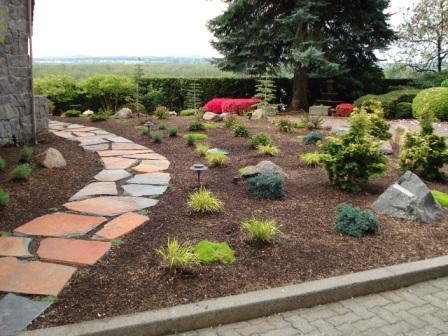
We’ve been in this business a long and have seen our share of landscape mistakes. Whether people aren’t sure how to best do things themselves or they follow bad advice, mistakes do happen. Here are some common ones we have seen- and some simple solutions to avoid making them in the future!
Do you have landscape pet peeves or mistakes you’ve seen? Tell us on our Facebook page!
1. Planting Trees Too Deeply
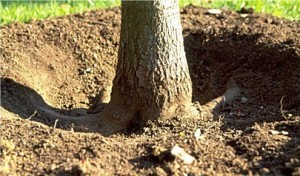
Planting a tree too deeply can kill it- plain and simple. Many people think that putting lots of soil around a tree’s base will help it grow. But this can choke a tree to death and potentially rot the roots. You can avoid this sad fate by identifying the tree’s crown (or collar) before you plant. The crown is a visible ring around the tree’s base where it meets the roots. Look for this- and then don’t bury it! Keep that just above the surface, and you will have larger success. A good rule of thumb is digging the hole slightly deeper than the container the tree came in. If you need help, contact Frontier Tree Service for help.
2. Over or Under-Watering

It can be tricky to know how much water plants need. And it is very tempting to give your whole landscape the same amount of water at the same time. But, the truth is, different plants have different watering needs. Over-watering AND under-watering can cause a multitude of problems for plants. Most need consistent weekly watering to maintain proper health and growth. Most lawns need just about half an inch per week! A sure-fire way to take care of your landscape plantings (and your investment) is with an automatic sprinkler system. We install and maintain smart irrigation systems that have timers and are responsive to rain, so you save time, money and water! Visit our irrigation page to learn more.
3. Improper pruning
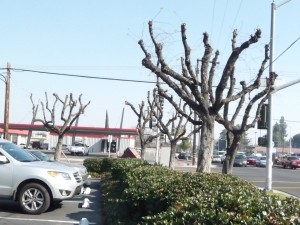
Tree and shrub pruning can occasionally be delicate work. Different plants need to be pruned in different ways AND at specific times of the year. Pruning cuts can be tricky to make but the biggest thing we see is people topping trees or lopping off huge sections of them just to try and keep them at bay. In many cases, this will lead to disease and/or lots of suckers or new branches coming out of the place you cut. Trees and shrubs need precise and timely pruning especially in their first few years of life. Fruit tree pruning is essential for production and health but all trees and shrubs benefit from regular cutbacks. Talk to the experts at Frontier Tree Service to get the best in pruning.
4. Planting in the Wrong Place
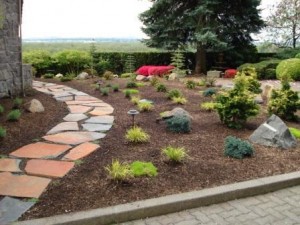
Some may be inclined to stick any plant where they think it might look good. But not paying attention to the soil quality and the plants’ growing requirements can lead to sickly plants in the future. Plants can also get overcrowded or block each other’s light. Do your homework before you plant! Pay close attention to the light and soil requirements as well as the plant’s mature height and width. Imagine a planting bed or space totally filled in when the plants are mature and take that into consideration. Be sure to give enough space from a wall or building for the plant to spread as well! Need more planting ideas? Check out our blog for inspiration.
5. Ignoring the Seasons or Climate
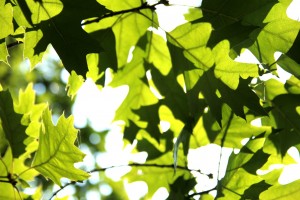
Go with the flow of nature for the best success in your yard. Don’t make the mistake of planting all spring-flowering plants or planting something that doesn’t do well in our region. Take a year-round approach to make sure your landscape looks beautiful all the time. Populate your landscape with interesting foliage plants, Northwest natives and evergreens to extend the life and beauty of your landscape. Make sure to select plants that are well-adapted to clay soil, rainy winters and dry summers. For the best results, consult the professionals!
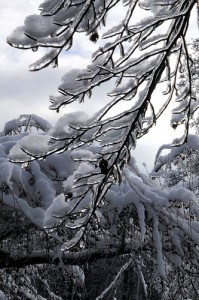 We have officially entered the cold months! Be sure to keep taking care of your landscape throughout the winter. They need your help to survive the cold weather and prepare for a great growing season next spring.
We have officially entered the cold months! Be sure to keep taking care of your landscape throughout the winter. They need your help to survive the cold weather and prepare for a great growing season next spring.
Remember, if you need assistance, you can count on us! Frontier Landscaping is always just a phone call away: (888) 544-5006
Protect Sensitive Plants
Hopefully, most of the plants in your landscape are completely dormant and/or are cold-hardy. But if you have some plants that you know are just barely rated for your zone, take a little extra precaution to help them stay healthy this winter. We highly recommend adding a few inches of mulch around the base of plants to insulate their roots and keep the soil from freezing. You can also cover plants entirely with floating row cover and frost blankets.
Spray Dormant Trees
Spray your fruit trees with dormant spray to help prevent pest infestations in the coming year. Dormant sprays kill off any resting insect eggs and larvae as well as protect from new ones coming in. Spraying will help ensure a healthy, blemish-free crop for the coming year.
It’s Pruning Time
Winter is the best time to prune your fruit trees! They are now dormant and ready to be trimmed back. This is so important for both the shape and size of the tree as well as the future fruit harvest. If you need help, you can call on Frontier Tree Service.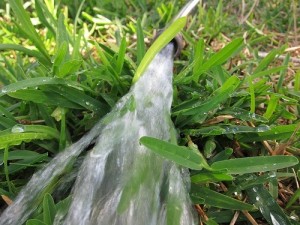
Water in Dry Weather
Though it may be cold out, we have been having some dry spells. In the absence of rain, we recommend watering trees and shrubs once a week. Water right at the soil line to avoid getting leaves wet (this can lead to damage in below-freezing temperatures). A slow drip is the best option to help plants thrive in cold, dry weather.
Prevent Frozen Pipes
Disconnect any outdoor hoses and wrap the faucets in a towel or bubble wrap to keep pipes from freezing. If it’s really cold, you might want to leave your sink cupboards open to let warm air in, and leave a small drip going indoors, to keep water flowing.
Additional Services:
Contact our Landscape Maintenance department for mulching, watering and plant care needs. (888) 544-5006
Contact Frontier Tree Service for pruning, dormant spray and more. (888) 544-5006
It’s not unusual to have a cold, stormy winter for the Pacific Northwest. For us here in the Vancouver-Portland metro area, that can mean lots of rain, wind storms and maybe even some snow!
It’s exciting to think about snow days and cozy rainy nights. However, we don’t want them interrupted by unexpected power outages and costly damage to your home as the result of falling trees and branches.
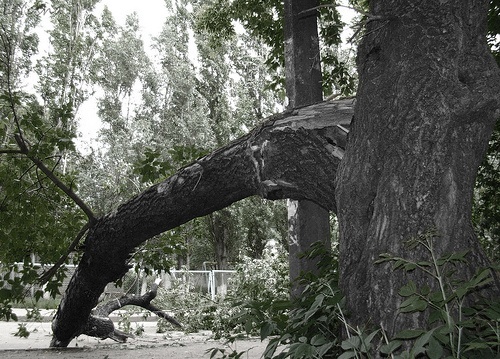
Many trees in Vancouver were planted several decades ago and are beginning to show signs of their age. This includes dead branches, weak spots and rotting from the inside out. They may seem ok in the light of day but, with the right winter storm, they can come crashing down. In our urban setting, this often leads to power lines coming down and- even worse- a tree landing on someone’s home.
We can all do our part to avoid these costly and dangerous accidents by assessing large trees before storm season kicks in. Frontier Tree Service provides professional Tree Hazard Risk Assessment to make sure that your trees (and your neighbors’) do not pose a threat to the neighborhood.
We can come to your home or business to check for weak spots, areas of damage, as well as any dead material that should be removed. We determine the health and safety of a given tree, to help customers decide whether or not it is in danger of breaking, falling or dying.

Our tree experts can give you a detailed assessment of the health of your trees and recommend any services or treatment, accordingly. We offer tree pruning as well as complete tree removal, if necessary. We also can apply hardware (cables and braces) to prevent damage and preserve the tree.
If you have old trees or suspect that they may have dead or diseased sections, call Frontier Tree Service to assess the situation and help you avoid dangerous and costly accidents later on. 1-888-544-5006
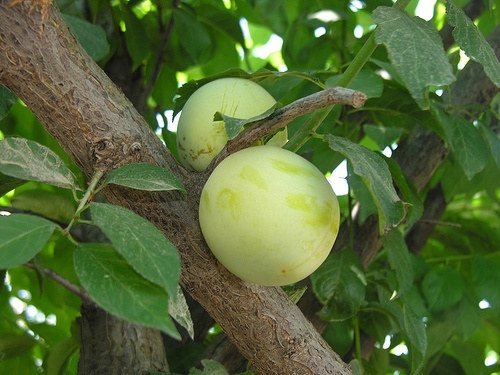
Each change of season means different chores around the landscape. One important winter chore is taking care of fruit trees. The very best time to do this is between the dormant months of November and February. You can try it yourself or call on the Frontier Tree Service for help.
Why Winter?
Once the weather cools, fruit trees enter a dormant state, where most of its energy is stored in the trunk and center of the tree. It’s possible to remove branches and even large sections without affecting the health of the tree. When they begin to grow again in spring, they can develop new, vigorous shoots!
Why Do Fruit Trees Pruning?
Pruning is so important for proper fruit tree growth and production. It helps to determine the shape of the trees and keep them at a manageable size for harvesting. It also increases fruit production and helps to keep the trees healthy. Tree pruning promotes new, healthy growth and removes old, dead, diseased, and damaged limbs. It helps the tree to develop a strong framework to hold the weight of the fruit and opens up the canopy to allow light into lower branches. Light penetration is essential to flower bud development and also helps fruit to set properly.

Fruit Tree in need of pruning: it needs to be thinned to allow light in as well as shaped for better production.
How Do You Prune A Fruit Tree?
Pruning techniques can differ by species so it is best to do some research before attempting this on your own. Find out if your tree sets fruit on old wood or new wood as this will help determine where to making pruning cuts. You also need to determine how often your tree needs to be pruned and how severely to cut it back. By researching your tree types, you can learn a lot about their individual needs.
Note: Even young fruit trees need pruning! In fact, some of the most important pruning cuts are made in the first 5 years of a tree’s life, as it determines its lifelong shape.
Frontier Tree Service Can Help
Frontier Tree Service has experts on staff that understand the pruning needs of different varieties of fruit trees. We can work them into the shape and size you need, while increasing the health of the tree. Contact us today to consult about your trees.

New trees and shrubs can be sensitive and will need a little extra TLC from you, after they have been planted. With a little nurturing at the beginning, most trees will take off and grow healthy and strong for years to come!
However, when trees are newly planted, the stress of the transition can cause them some shock which can lead to disease susceptibility, leaf loss and even death. So, to avoid those terrible fates, we have put together a list of helpful tips to care for new trees!
You can contact Frontier Landscaping with your questions and concerns, whether you want us to plant a new tree for you or help you take care of existing plants! Contact us here.
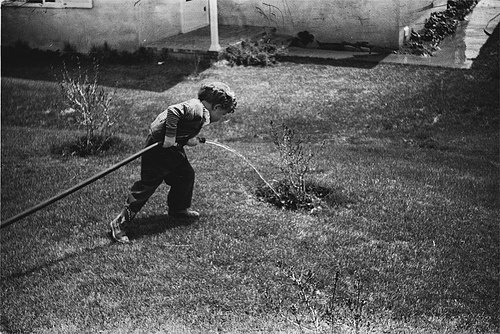
- Water plants deeply directly after transplanting. When we say deeply, we mean to keep a low steady flow of water aimed at plant roots for several minutes, until the soil seems saturated (if a puddle forms and doesn’t disappear in a few seconds, that is probably sufficient).
- Generally speaking, deep, less frequent watering is better than everyday sprinkles. This promotes deep root growth and can reduce water loss by evaporation.
- Most of our native soils are clay-heavy and absorb water at a slower rate. So we recommend giving trees a very slow flow of water to allow more to soak in.
- Mulch around the base of the trees to suppress weeds and trap in moisture. It also keeps the soil temperature at a more even keel. Just be sure not to pile the mulch right around the tree base- give it an inch or two to breathe.
- During the summer months, we recommend watering when temperatures are cool, either in the early morning or at night.
If you run into problems or questions, regarding watering, pest control or other concerns, contact Frontier Landscaping. We are happy to discuss it with you.
Frontier Tree Service takes care of a vast array of tree issues all around Vancouver and the Portland Metro Area. We deal with dead and diseased trees as well as trees that come down in storms. But a lot of our work consists in the routine maintenance of keeping healthy trees well… healthy! We prune many different types of trees including most common deciduous and conifers as well as fruit trees and shrubs. We prune for the health of the tree as well as the specifications of the client, whether that is to keep the tree small or to give it an attractive shape. All proper pruning helps to increase the lifespan and health of a tree or shrub. We wanted to share with you a few common techniques we use when pruning.
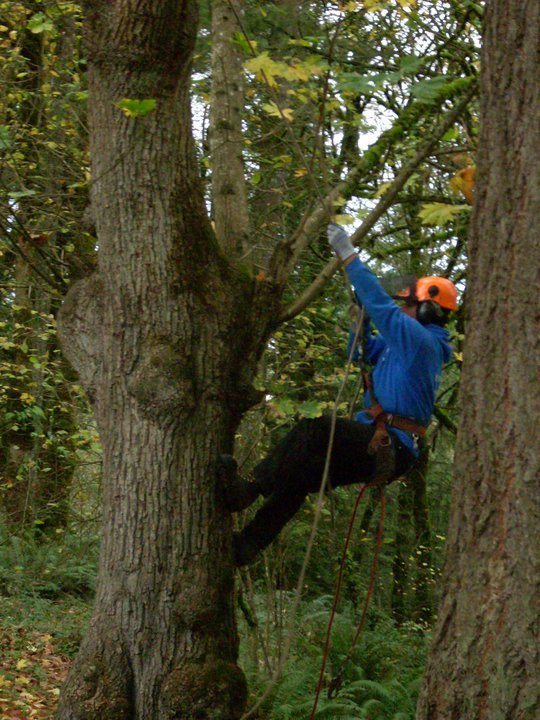
Young trees need to be pruned more vigorously than older trees because the tree’s shape will be determined in the first few years. Older, taller trees need to be pruned to maintain health but also safety, as they start to hover over power lines and houses.
Thinning: This is the technique we use most often in order to maintain good tree shape. When we thin trees or shrubs, we remove entire branches where they join at the stem (just above the branch collar). This improves circulation while allowing wind to safely blow through the tree. Thinning provides a good opportunity to remove diseased or weak branches or branches that have grown at strange or unattractive angles.
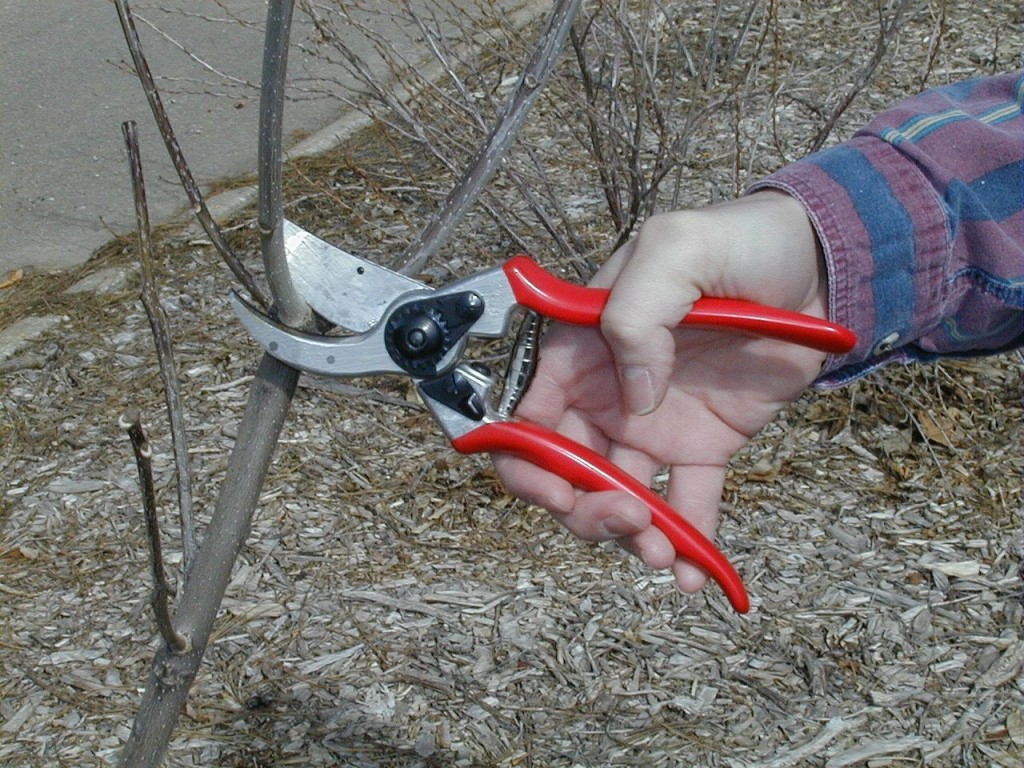
Heading: This useful technique promotes new growth in trees and shrubs by cutting back side branches. When heading, we cut a branch back to where the bud has formed or to the tip of a side branch. This stimulates the tree to put on healthy, new growth.
Renewal Pruning: This is most often used for shrubs. It is a dramatic technique that cuts most of the branches of a shrub back practically to the soil line, allowing them to regenerate completely the following year. This stimulates new growth and cuts back thick, woody stems, allowing for new ones to grow in their place. This technique works best on lilacs, viburnums, dogwoods and similar shrubs.
Each type of tree and shrub are pruned in their proper season. Broadleaf evergreens (like rhododendrons) are pruned in early summer, after blooming. Fruit trees are pruned in mid-winter, before they set buds for the coming season. Pruning to control size is often done after the spring flush of growth while pruning to encourage growth is usually done when a tree is dormant. Get to know your trees and shrubs and find out what kind of pruning they need and when is the best time to do it.
Contact Frontier Tree Service with your pruning concerns. We can help you get started on taking care of your trees and shrubs. Do you have a specific question about your trees and shrubs? You can contact us here or leave your question in the comments below.

















